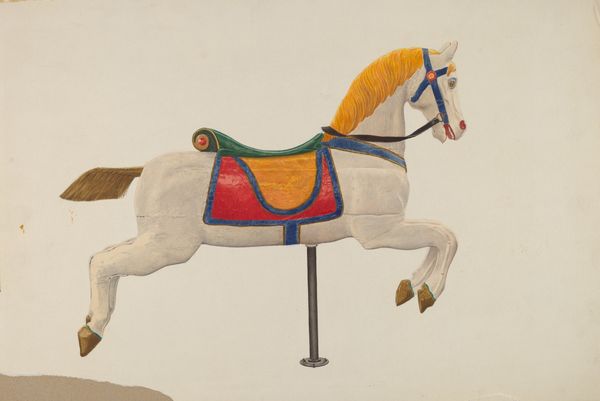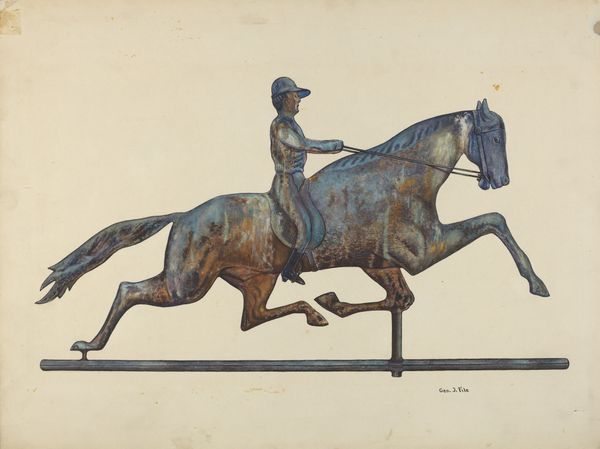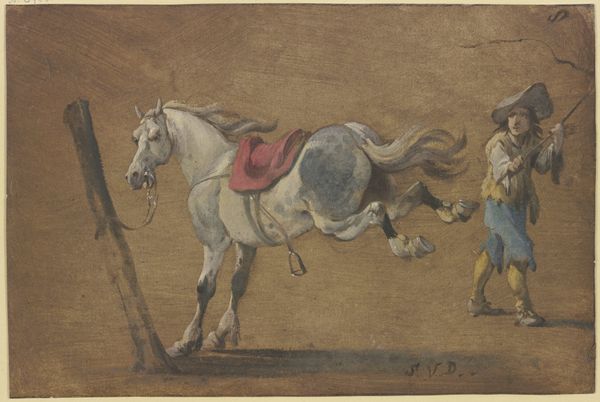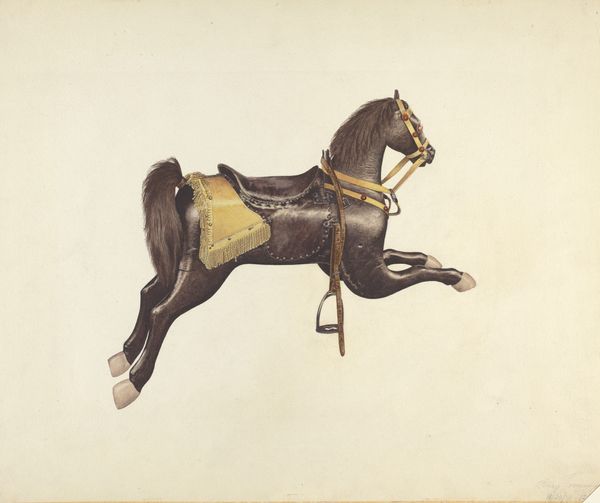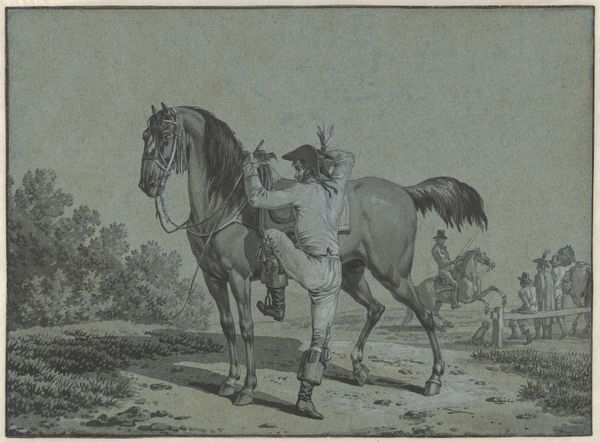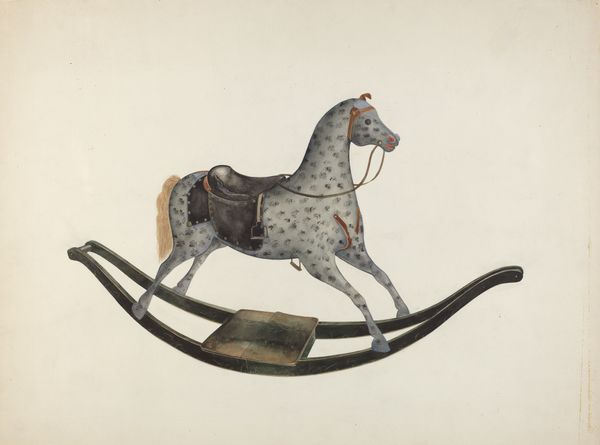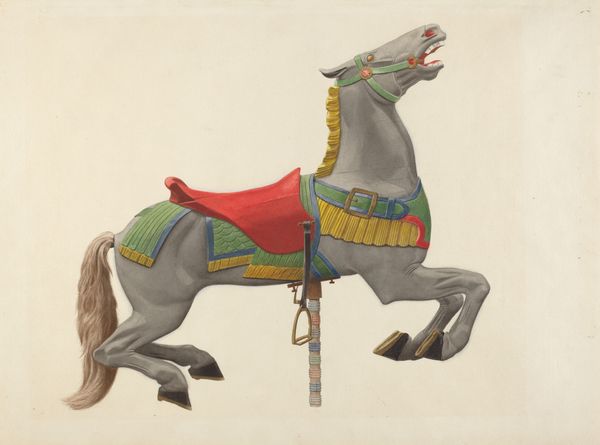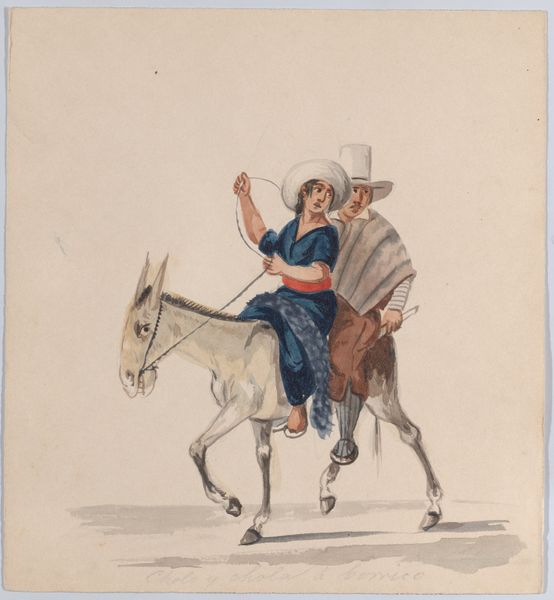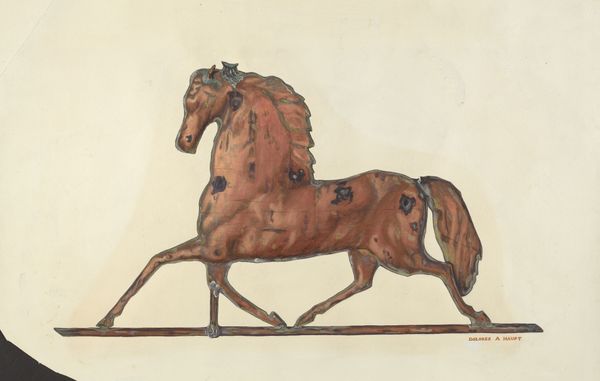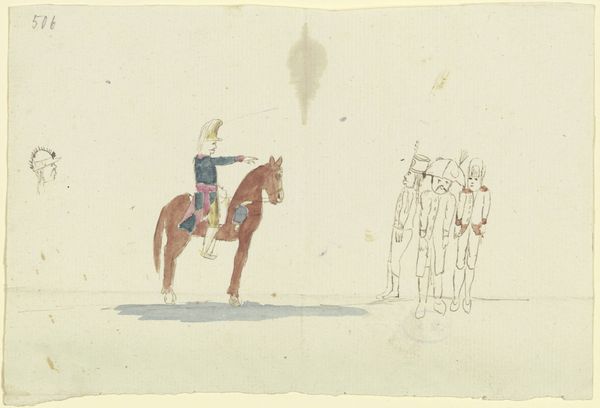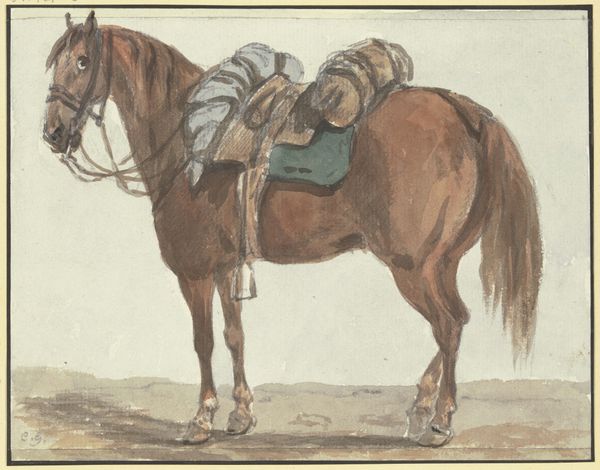
A Syce (Groom) Holding Two Carriage Horses 1820 - 1870
0:00
0:00
drawing, coloured-pencil, watercolor
#
drawing
#
coloured-pencil
#
landscape
#
watercolor
#
coloured pencil
#
orientalism
#
horse
#
men
#
islamic-art
#
genre-painting
#
realism
Dimensions: H. 12 in. (30.5 cm) W. 20 in. (50.8 cm)
Copyright: Public Domain
Curator: Before us is “A Syce (Groom) Holding Two Carriage Horses,” created between 1820 and 1870 by Shaikh Muhammad Amir of Karraya. It’s rendered in watercolor and colored pencil. What's your immediate impression? Editor: It’s striking how the almost translucent quality of the watercolor lends an ethereal quality to the figures, especially the horses. They almost seem to float, despite their powerful physique. The harnesses appear heavy, highlighting the craft involved. Curator: Absolutely, the work exists within a complex network of colonial encounters and artistic exchanges. British patronage of Indian artists during this period created a demand for these types of detailed depictions of local life and customs, situating both the groom and the horses as symbols of status and power within a rapidly changing social landscape. The syce, the groom, occupies a position of servitude, yet he is rendered with dignity, isn’t he? How does the materiality reflect the power dynamics at play? Editor: Well, consider the paper itself—probably sourced through trade networks tied to colonial rule. The pigments, whether locally sourced or imported, required skill and labor to transform raw materials into the colors we see. The precision in the harnesses speaks to both the wealth that afforded them and the artisanship required to produce them. The realism, especially in the depiction of the horses' musculature, would have served a particular function, possibly as a way for owners to review the stock without necessarily seeing it. Curator: The very act of creating this image became a way of knowing and classifying, very similar to the ethnographic surveys conducted during the period. We see reflections on orientalism. How does this painting affirm and subvert certain notions of identity, gender, and class? Editor: One could argue that this painting normalizes a hierarchical structure where labor is visually aestheticized. The bright red clay on the ground suggests something extracted and useful, perhaps a by-product of other trades, while the relative invisibility of the syce belies the true work of animal husbandry. The horses, of course, are at the heart of that network. Curator: It's a potent visual statement on cultural exchange. And perhaps how images solidify societal expectations as a material legacy. Editor: Definitely food for thought regarding labor and artistic endeavor in post-colonial contexts. The relationship between subject, representation, and materiality provides such a strong way to ground it.
Comments
No comments
Be the first to comment and join the conversation on the ultimate creative platform.
